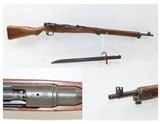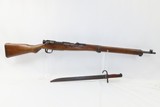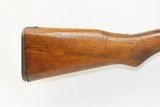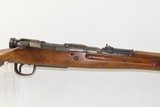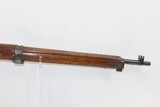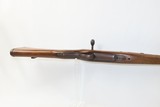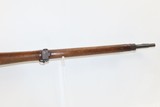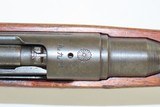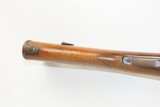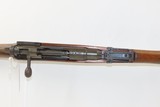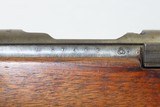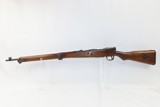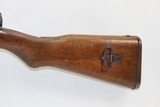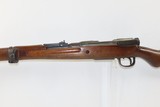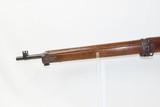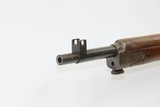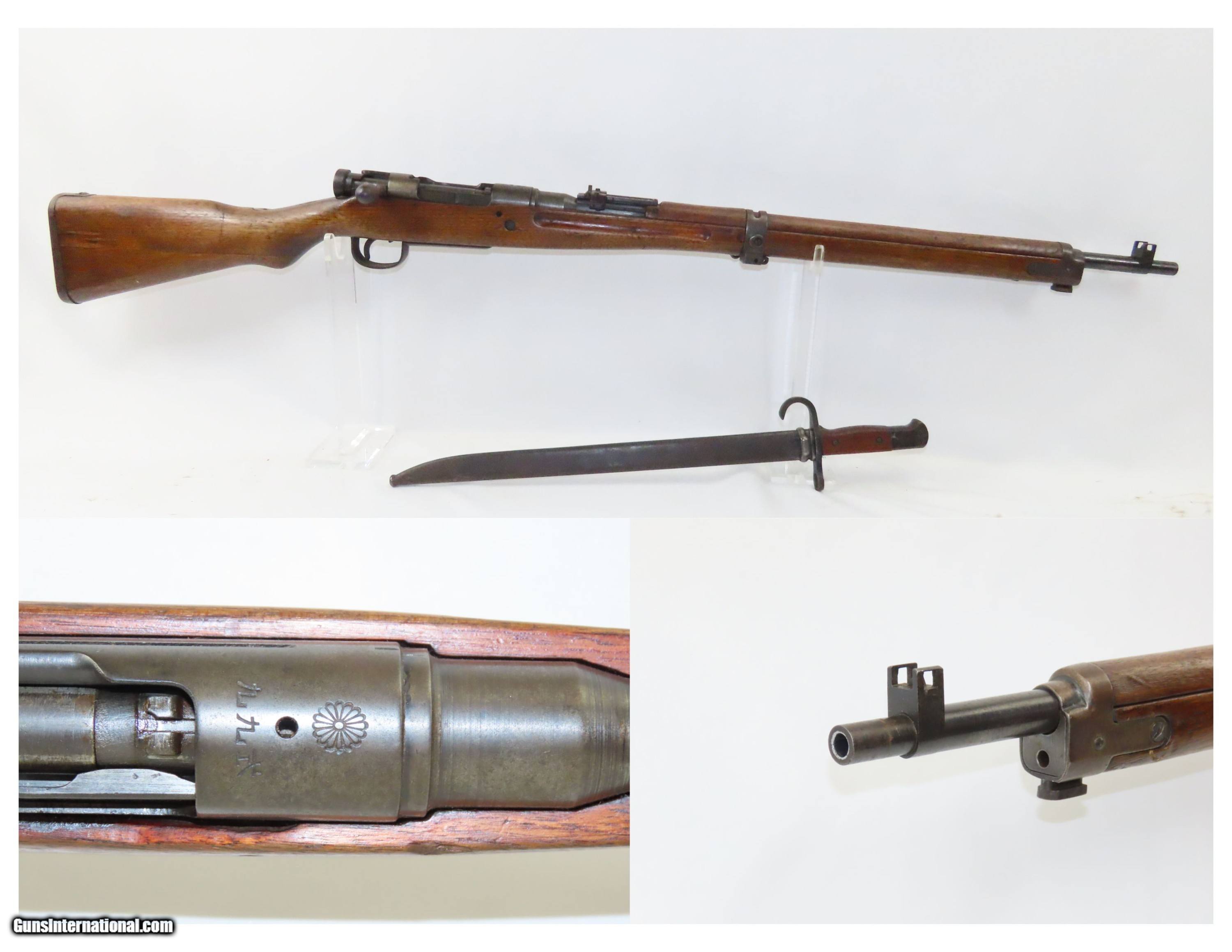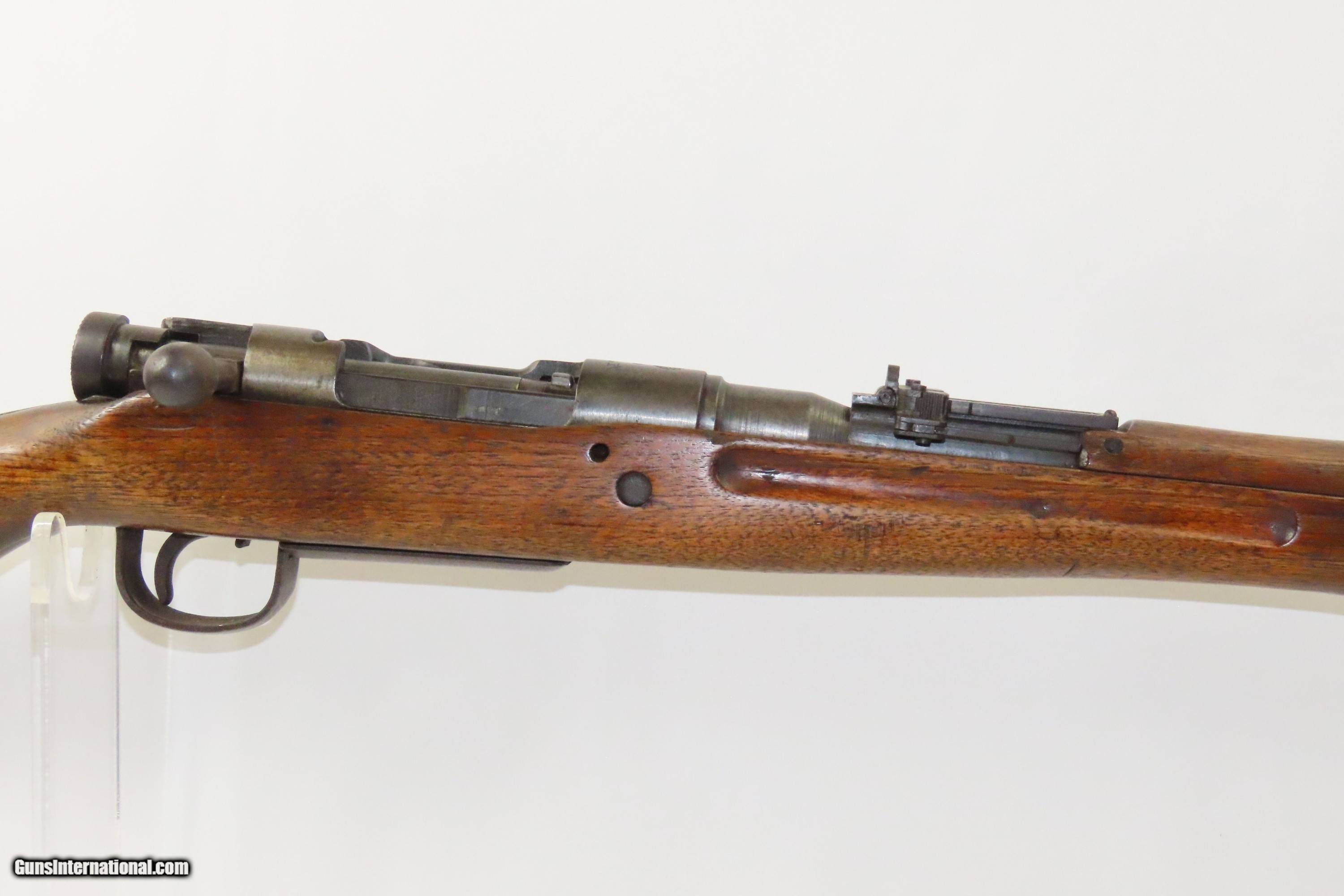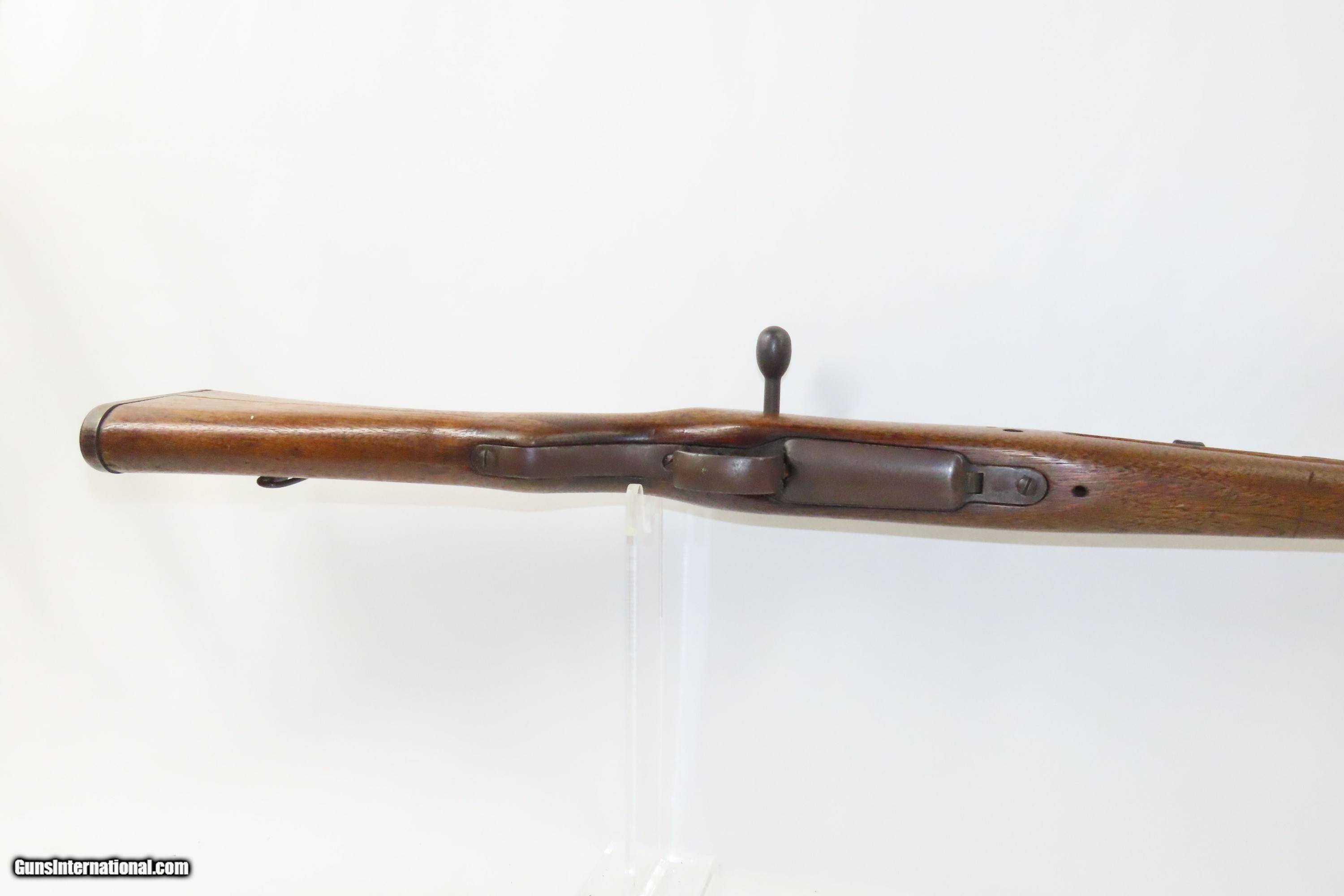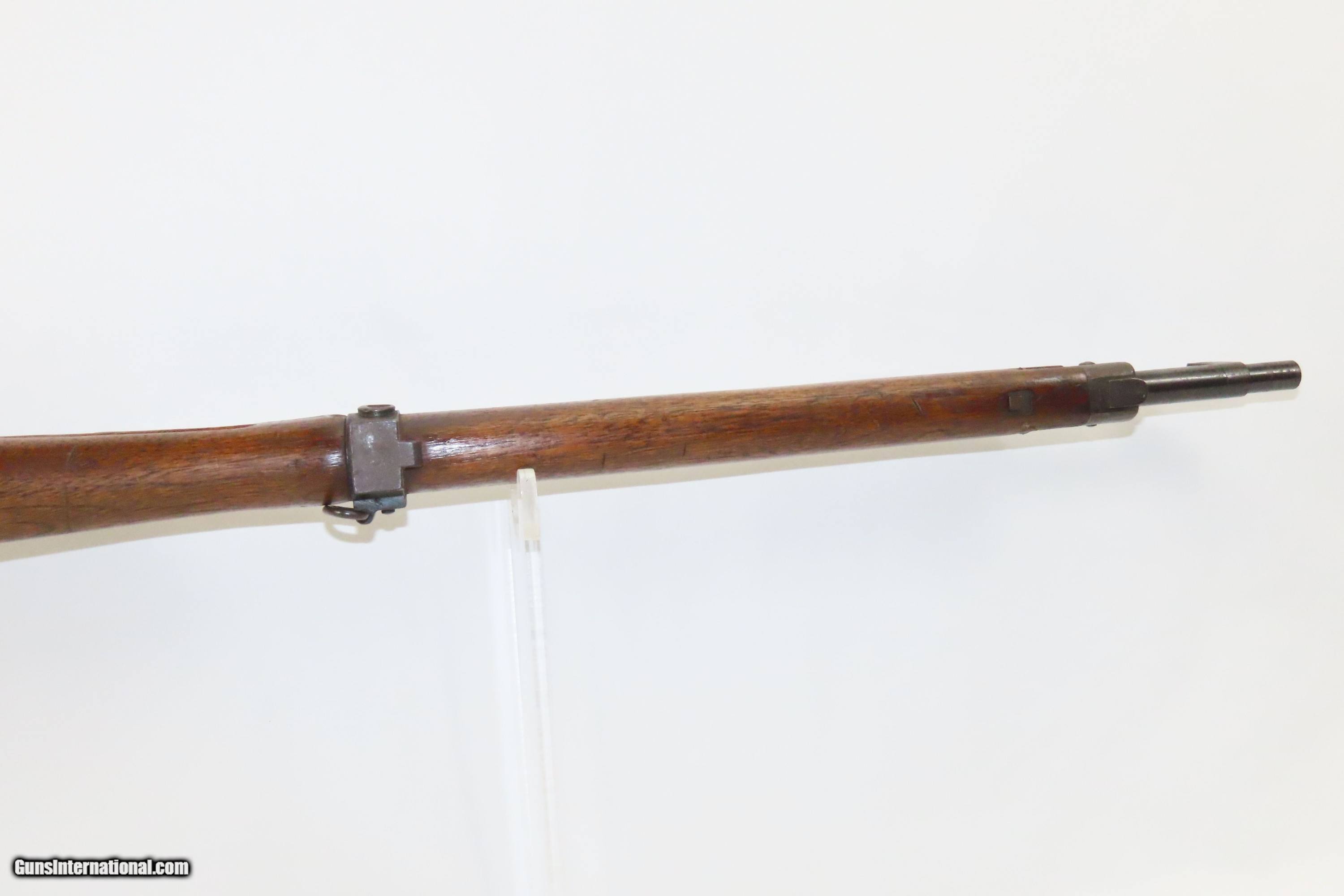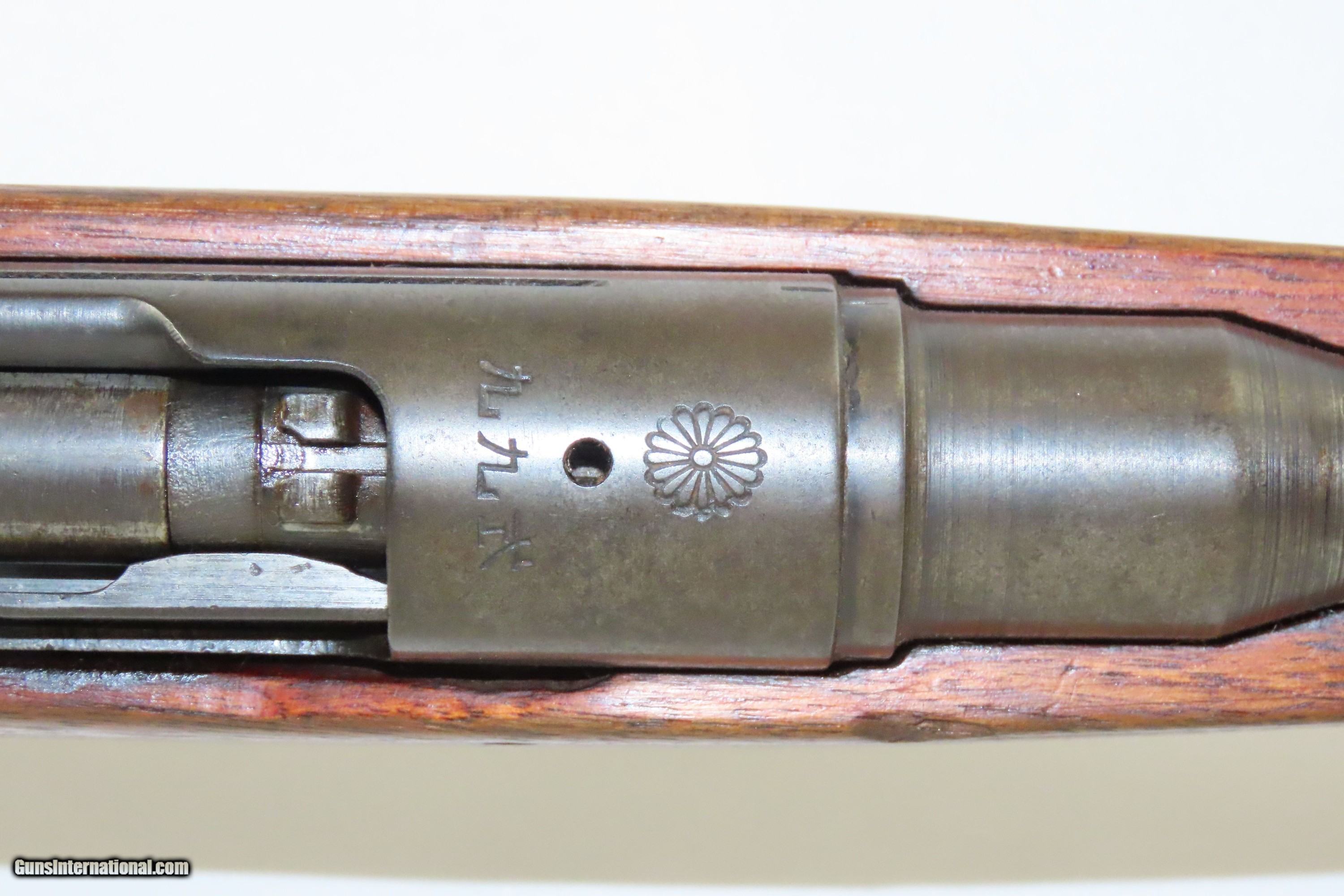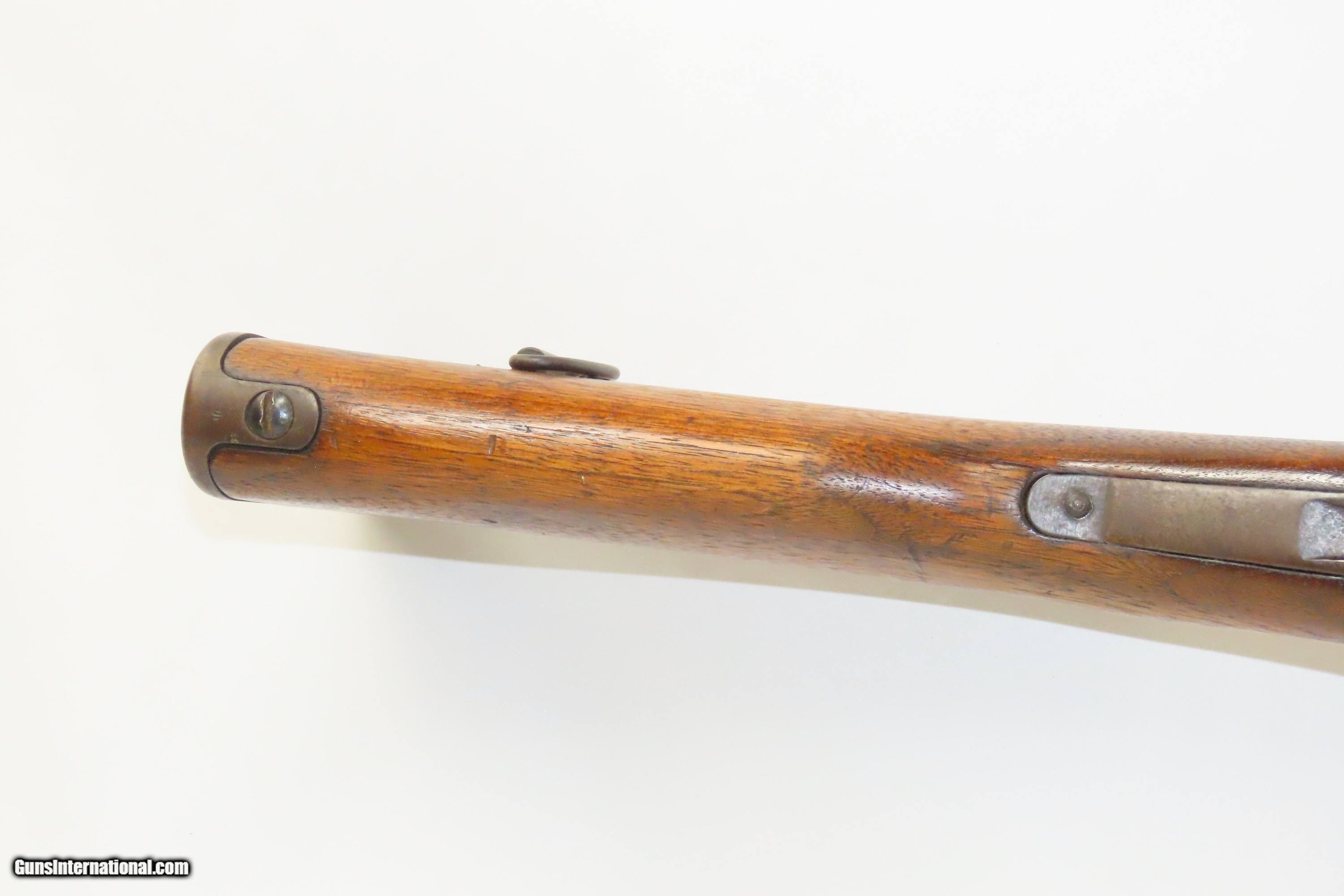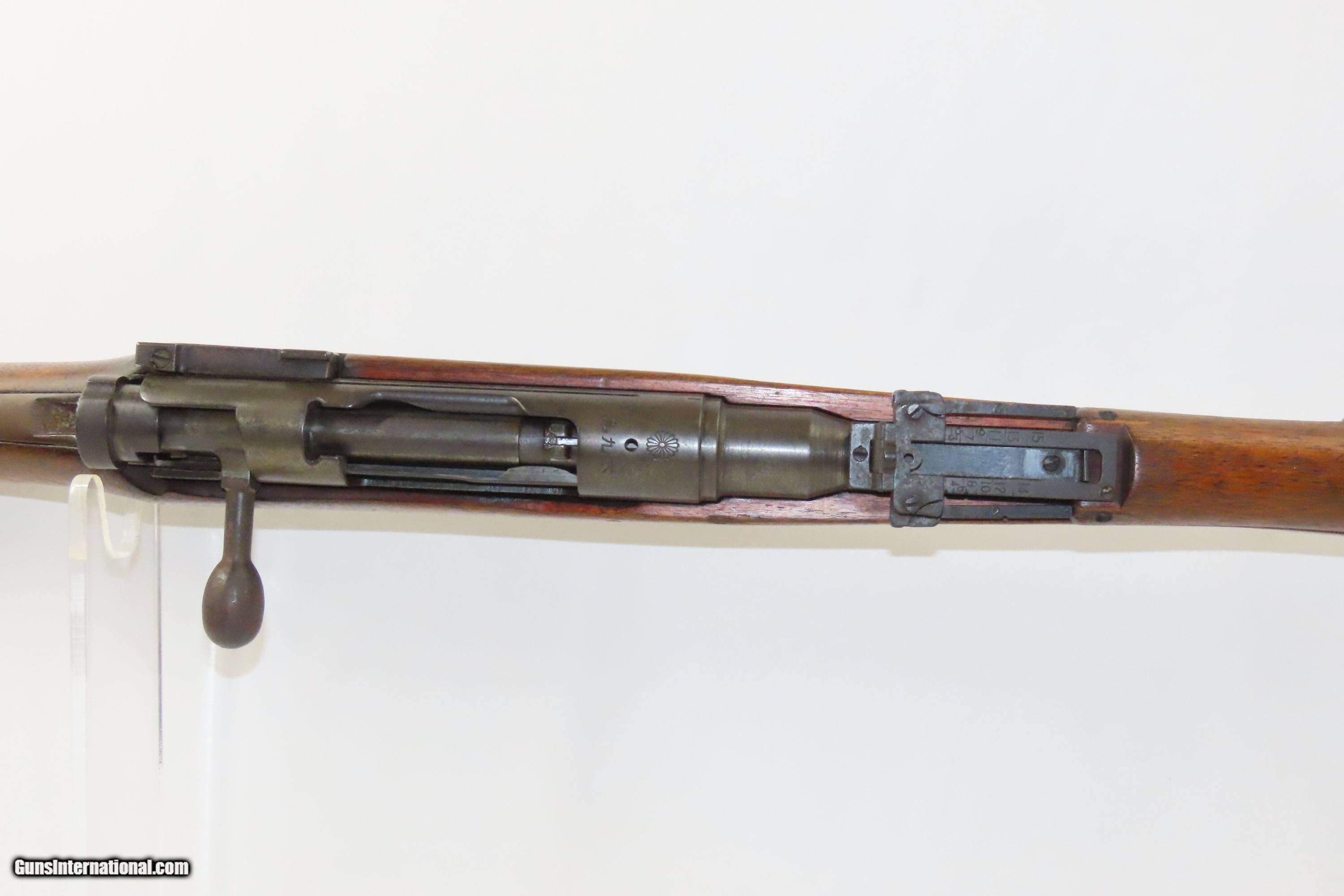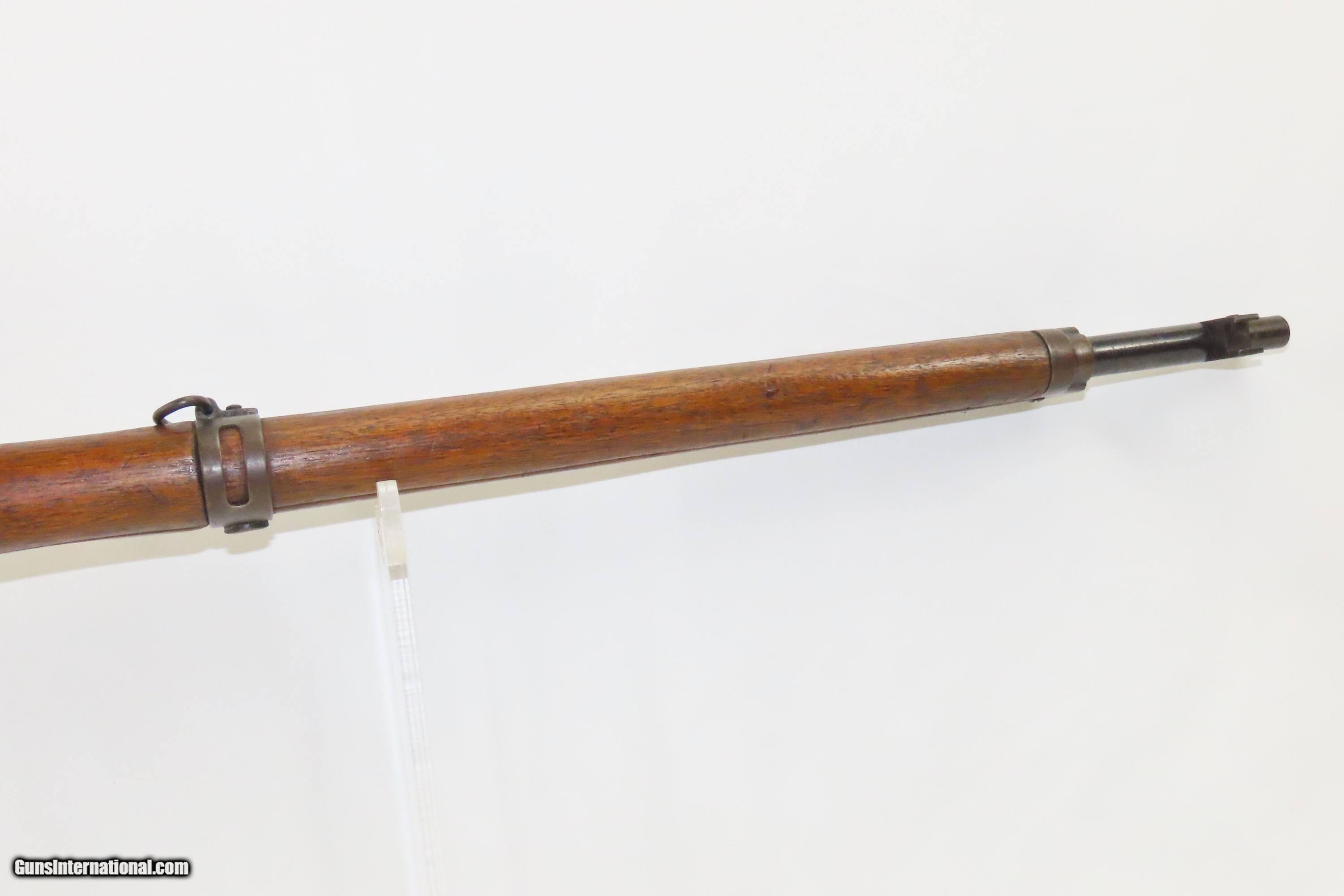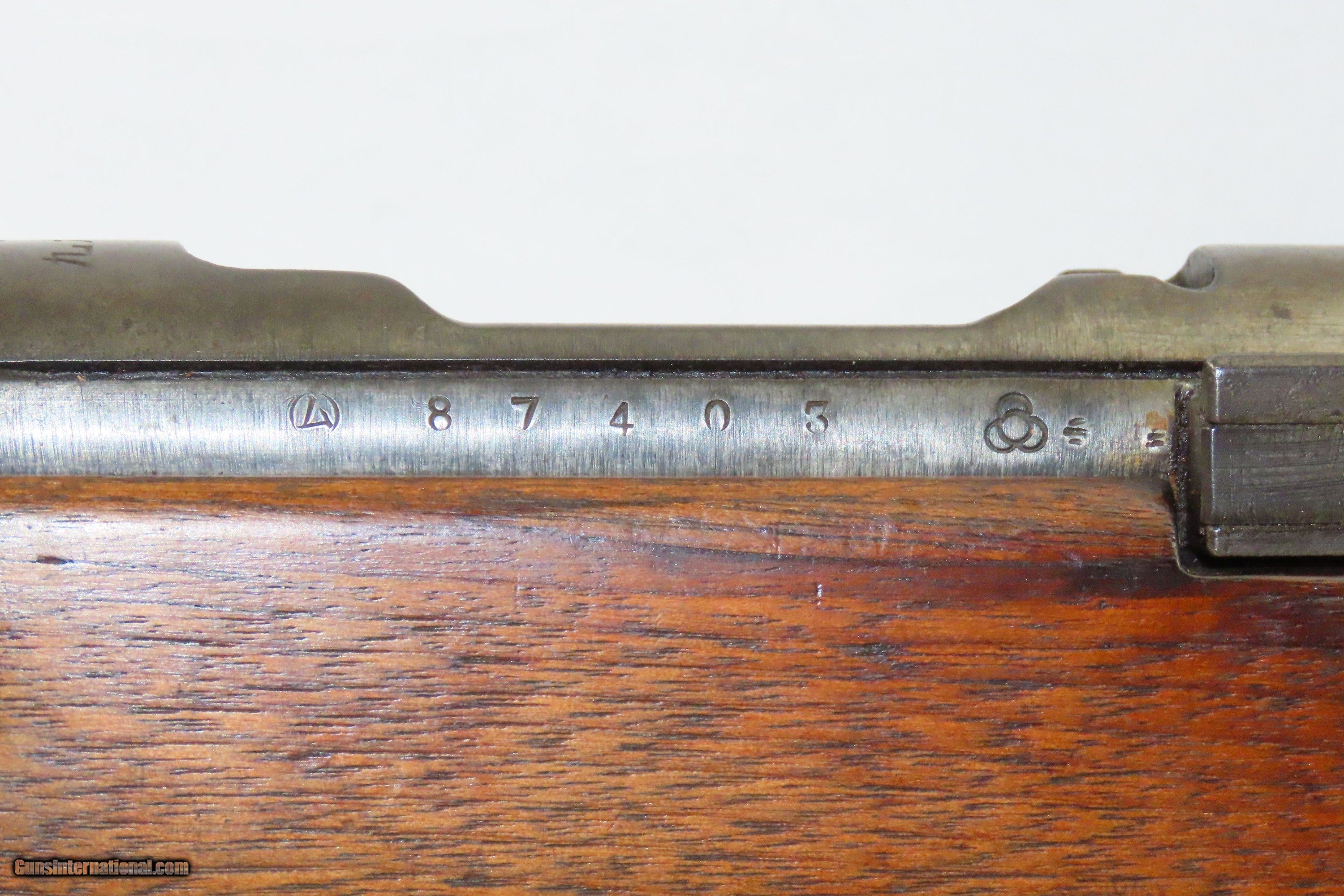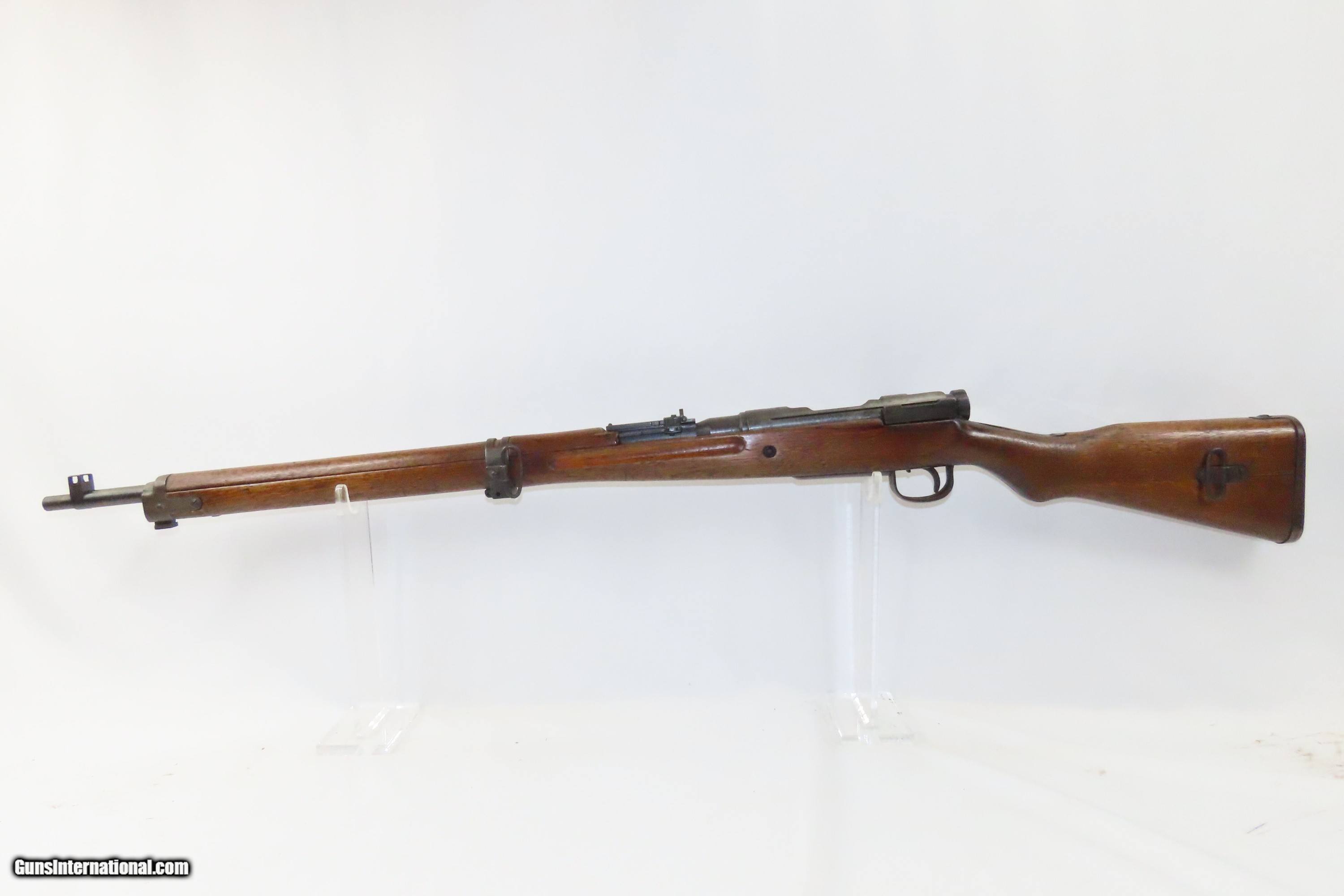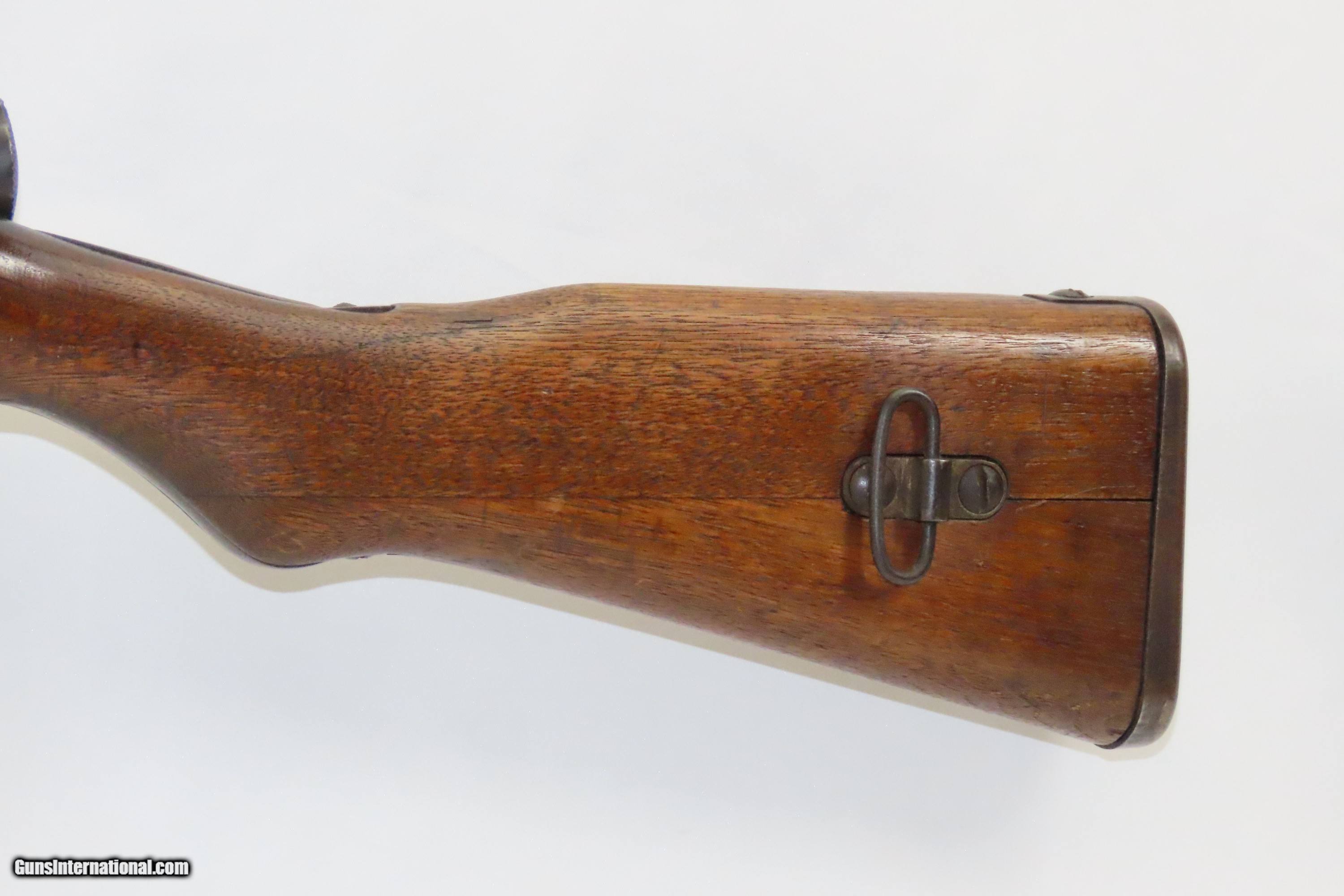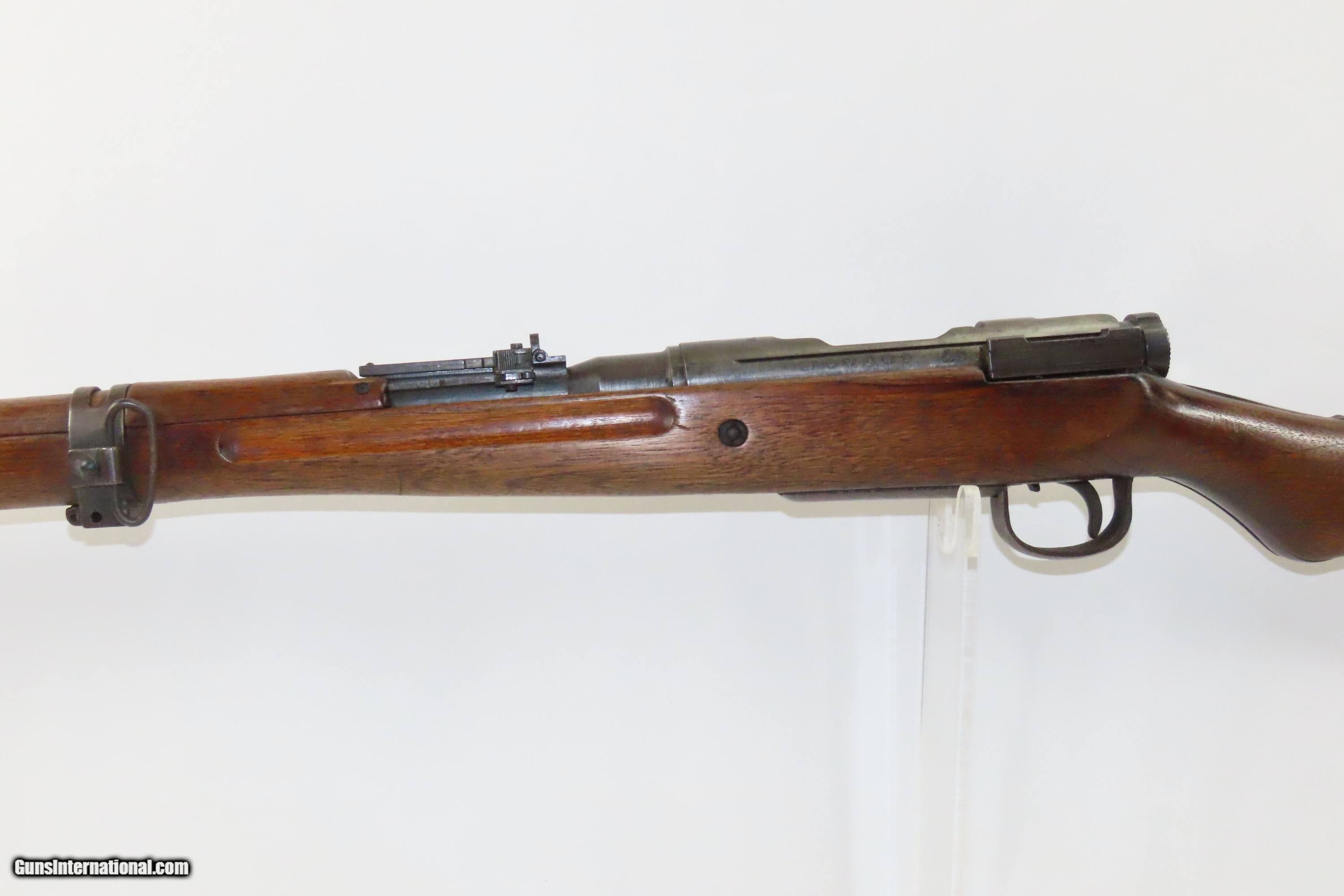Your Session is Ending
 The server has not detected any activity for the last 3 hours.
For your security, your session will expire in 2 minutes and you will be redirected to the Sign In page.
Would you like to stay signed in?
The server has not detected any activity for the last 3 hours.
For your security, your session will expire in 2 minutes and you will be redirected to the Sign In page.
Would you like to stay signed in?
WORLD WAR II Era KOKURA Type 99 7.7mm JAPANESE Caliber C&R MILITARY Rifle ARISAKA Rifle w/A-A SIGHT, BAYONET, and SCABBARD
WORLD WAR II Era KOKURA Type 99 7.7mm JAPANESE Caliber C&R MILITARY Rifle ARISAKA Rifle w/A-A SIGHT, BAYONET, and SCABBARD
Guns International #: 102399061
Seller's Inventory #: 230496
Seller's Information
When emailing or calling sellers direct,
please mention that you saw their listing on GunsInternational.com
Seller: AncestryGunsLLC
Company: Ancestry Guns LLC
Company: Ancestry Guns LLC
Member Since: 11/3/16
State:
Missouri
Zip: 65203
Country: United States
Phone: (314) 707-7373
Int'l Phone: 314-707-7373
Platinum Seller
Active Listings: 1421
Total Listings: 33826
Seller Type:FFL Dealer
Return Policy: 3 day inspection and return policy on used guns and accessories.
Payment Methods: Credit Card, Certified Check, Money Order
WORLD WAR II Era KOKURA Type 99 7.7mm JAPANESE Caliber C&R MILITARY Rifle
ARISAKA Rifle w/A-A SIGHT, BAYONET, and SCABBARD
Description:
WORLD WAR II Era KOKURA Type 99 7.7mm JAPANESE Caliber C&R MILITARY Rifle
ARISAKA Rifle w/A-A SIGHT, BAYONET, and SCABBARD
Here we present a C&R Japanese Kokura Type 99 Arisaka Military Rifle manufactured circa 1943 at the Kokura Arsenal in Kokura, Japan. The Type 99 was one of the standard bolt-action combat rifles to be used by the Japanese Empire during World War II. At the start of its production, it proved a reliable and robust rifle. But, the closing noose of the Pacific Theater soon brought about dramatic changes in its production methods, often leading to a subclass weapon. The Type 99 had several variants that included the Short Rifle, Long Rifle, an airborne variant and a dedicated sniper model. Production lasted from 1939 into 1945 before ending with Japan's surrender.
The arsenal was established in 1916 as the Kokura Arms Factory and was one of six arsenals under the control of the government. Interestingly, this arsenal was the backup target of the US’s first atomic bomb and the main target of the second. However, the arsenal could not be bombed due to it being obscured by smoke and clouds from firebombing missions, so the US ended up bombing Nagasaki instead. Shortly after the Japanese surrender, the majority of the Japanese arsenals were forced to close and sequestered by the American forces.
Despite the respect that the rifle earned early on, the Type 99 suffered from quality control towards the end of the war with the Japanese Empire struggling to survive. Raw materials and competent production processes were both in short supply resulting in poor quality and finishes on most of the outgoing Arisaka rifles including the Type 99, thus being referred to as a “Last Ditch Effort”. Some were shipped without finishes of any kind while others had their rear sites wholly replaced by a more basic and fixed system. Additionally, the machining process involved in the internal components often led to the rifle being quite dangerous to fire for the operator for the core components were poorly produced. As Japanese surrender became all the more imminent, many Army rifles bearing the Imperial Chrysanthemum marking of the Emperor had this emblem grounded down in 1945 to spare the Emperor the embarrassment of surrender. Many surviving rifles are often found with this particular condition, especially late-war/late-model production versions.
The overall condition is good. Strong action. The bore is bright and nicely rifled. This example sports a solid stock with average handling. Markings are legible. The anti-aircraft rear sight is a very nice feature. This example has the mum intact. Very good bayonet and it remains sharp.
This firearm is classified as a Curio & Relic.
Barrel is 26 inches.
Caliber: 7.7mm Japanese
Overall condition as seen in photos.
Very Fast. Very Safe. FREE SHIPPING. Will need to be sent to your local FFLor C&R licensee. This firearm is classified as a Curio & Relic.
Guaranteed AUTHENTIC & Includes CERTIFICATE OF AUTHENTICITY.
ancestryguns
$1250
#230496
SOLD
Curio/Relic: Yes
Description:
WORLD WAR II Era KOKURA Type 99 7.7mm JAPANESE Caliber C&R MILITARY Rifle
ARISAKA Rifle w/A-A SIGHT, BAYONET, and SCABBARD
Here we present a C&R Japanese Kokura Type 99 Arisaka Military Rifle manufactured circa 1943 at the Kokura Arsenal in Kokura, Japan. The Type 99 was one of the standard bolt-action combat rifles to be used by the Japanese Empire during World War II. At the start of its production, it proved a reliable and robust rifle. But, the closing noose of the Pacific Theater soon brought about dramatic changes in its production methods, often leading to a subclass weapon. The Type 99 had several variants that included the Short Rifle, Long Rifle, an airborne variant and a dedicated sniper model. Production lasted from 1939 into 1945 before ending with Japan's surrender.
The arsenal was established in 1916 as the Kokura Arms Factory and was one of six arsenals under the control of the government. Interestingly, this arsenal was the backup target of the US’s first atomic bomb and the main target of the second. However, the arsenal could not be bombed due to it being obscured by smoke and clouds from firebombing missions, so the US ended up bombing Nagasaki instead. Shortly after the Japanese surrender, the majority of the Japanese arsenals were forced to close and sequestered by the American forces.
Despite the respect that the rifle earned early on, the Type 99 suffered from quality control towards the end of the war with the Japanese Empire struggling to survive. Raw materials and competent production processes were both in short supply resulting in poor quality and finishes on most of the outgoing Arisaka rifles including the Type 99, thus being referred to as a “Last Ditch Effort”. Some were shipped without finishes of any kind while others had their rear sites wholly replaced by a more basic and fixed system. Additionally, the machining process involved in the internal components often led to the rifle being quite dangerous to fire for the operator for the core components were poorly produced. As Japanese surrender became all the more imminent, many Army rifles bearing the Imperial Chrysanthemum marking of the Emperor had this emblem grounded down in 1945 to spare the Emperor the embarrassment of surrender. Many surviving rifles are often found with this particular condition, especially late-war/late-model production versions.
The overall condition is good. Strong action. The bore is bright and nicely rifled. This example sports a solid stock with average handling. Markings are legible. The anti-aircraft rear sight is a very nice feature. This example has the mum intact. Very good bayonet and it remains sharp.
This firearm is classified as a Curio & Relic.
Barrel is 26 inches.
Caliber: 7.7mm Japanese
Overall condition as seen in photos.
Very Fast. Very Safe. FREE SHIPPING. Will need to be sent to your local FFLor C&R licensee. This firearm is classified as a Curio & Relic.
Guaranteed AUTHENTIC & Includes CERTIFICATE OF AUTHENTICITY.
ancestryguns
$1250
#230496
SOLD
Curio/Relic: Yes
Guns International #: 102399061
Seller's Inventory #: 230496
Seller's Information
When emailing or calling sellers direct,
please mention that you saw their listing on GunsInternational.com
Seller: AncestryGunsLLC
Company: Ancestry Guns LLC
Company: Ancestry Guns LLC
Member Since: 11/3/16
State:
Missouri
Zip: 65203
Country: United States
Phone: (314) 707-7373
Int'l Phone: 314-707-7373
Platinum Seller
Active Listings: 1421
Total Listings: 33826
Seller Type:FFL Dealer
Return Policy: 3 day inspection and return policy on used guns and accessories.
Payment Methods: Credit Card, Certified Check, Money Order
WORLD WAR II Era KOKURA Type 99 7.7mm JAPANESE Caliber C&R MILITARY Rifle
ARISAKA Rifle w/A-A SIGHT, BAYONET, and SCABBARD
Description:
WORLD WAR II Era KOKURA Type 99 7.7mm JAPANESE Caliber C&R MILITARY Rifle
ARISAKA Rifle w/A-A SIGHT, BAYONET, and SCABBARD
Here we present a C&R Japanese Kokura Type 99 Arisaka Military Rifle manufactured circa 1943 at the Kokura Arsenal in Kokura, Japan. The Type 99 was one of the standard bolt-action combat rifles to be used by the Japanese Empire during World War II. At the start of its production, it proved a reliable and robust rifle. But, the closing noose of the Pacific Theater soon brought about dramatic changes in its production methods, often leading to a subclass weapon. The Type 99 had several variants that included the Short Rifle, Long Rifle, an airborne variant and a dedicated sniper model. Production lasted from 1939 into 1945 before ending with Japan's surrender.
The arsenal was established in 1916 as the Kokura Arms Factory and was one of six arsenals under the control of the government. Interestingly, this arsenal was the backup target of the US’s first atomic bomb and the main target of the second. However, the arsenal could not be bombed due to it being obscured by smoke and clouds from firebombing missions, so the US ended up bombing Nagasaki instead. Shortly after the Japanese surrender, the majority of the Japanese arsenals were forced to close and sequestered by the American forces.
Despite the respect that the rifle earned early on, the Type 99 suffered from quality control towards the end of the war with the Japanese Empire struggling to survive. Raw materials and competent production processes were both in short supply resulting in poor quality and finishes on most of the outgoing Arisaka rifles including the Type 99, thus being referred to as a “Last Ditch Effort”. Some were shipped without finishes of any kind while others had their rear sites wholly replaced by a more basic and fixed system. Additionally, the machining process involved in the internal components often led to the rifle being quite dangerous to fire for the operator for the core components were poorly produced. As Japanese surrender became all the more imminent, many Army rifles bearing the Imperial Chrysanthemum marking of the Emperor had this emblem grounded down in 1945 to spare the Emperor the embarrassment of surrender. Many surviving rifles are often found with this particular condition, especially late-war/late-model production versions.
The overall condition is good. Strong action. The bore is bright and nicely rifled. This example sports a solid stock with average handling. Markings are legible. The anti-aircraft rear sight is a very nice feature. This example has the mum intact. Very good bayonet and it remains sharp.
This firearm is classified as a Curio & Relic.
Barrel is 26 inches.
Caliber: 7.7mm Japanese
Overall condition as seen in photos.
Very Fast. Very Safe. FREE SHIPPING. Will need to be sent to your local FFLor C&R licensee. This firearm is classified as a Curio & Relic.
Guaranteed AUTHENTIC & Includes CERTIFICATE OF AUTHENTICITY.
ancestryguns
$1250
#230496
SOLD
Curio/Relic: Yes
Description:
WORLD WAR II Era KOKURA Type 99 7.7mm JAPANESE Caliber C&R MILITARY Rifle
ARISAKA Rifle w/A-A SIGHT, BAYONET, and SCABBARD
Here we present a C&R Japanese Kokura Type 99 Arisaka Military Rifle manufactured circa 1943 at the Kokura Arsenal in Kokura, Japan. The Type 99 was one of the standard bolt-action combat rifles to be used by the Japanese Empire during World War II. At the start of its production, it proved a reliable and robust rifle. But, the closing noose of the Pacific Theater soon brought about dramatic changes in its production methods, often leading to a subclass weapon. The Type 99 had several variants that included the Short Rifle, Long Rifle, an airborne variant and a dedicated sniper model. Production lasted from 1939 into 1945 before ending with Japan's surrender.
The arsenal was established in 1916 as the Kokura Arms Factory and was one of six arsenals under the control of the government. Interestingly, this arsenal was the backup target of the US’s first atomic bomb and the main target of the second. However, the arsenal could not be bombed due to it being obscured by smoke and clouds from firebombing missions, so the US ended up bombing Nagasaki instead. Shortly after the Japanese surrender, the majority of the Japanese arsenals were forced to close and sequestered by the American forces.
Despite the respect that the rifle earned early on, the Type 99 suffered from quality control towards the end of the war with the Japanese Empire struggling to survive. Raw materials and competent production processes were both in short supply resulting in poor quality and finishes on most of the outgoing Arisaka rifles including the Type 99, thus being referred to as a “Last Ditch Effort”. Some were shipped without finishes of any kind while others had their rear sites wholly replaced by a more basic and fixed system. Additionally, the machining process involved in the internal components often led to the rifle being quite dangerous to fire for the operator for the core components were poorly produced. As Japanese surrender became all the more imminent, many Army rifles bearing the Imperial Chrysanthemum marking of the Emperor had this emblem grounded down in 1945 to spare the Emperor the embarrassment of surrender. Many surviving rifles are often found with this particular condition, especially late-war/late-model production versions.
The overall condition is good. Strong action. The bore is bright and nicely rifled. This example sports a solid stock with average handling. Markings are legible. The anti-aircraft rear sight is a very nice feature. This example has the mum intact. Very good bayonet and it remains sharp.
This firearm is classified as a Curio & Relic.
Barrel is 26 inches.
Caliber: 7.7mm Japanese
Overall condition as seen in photos.
Very Fast. Very Safe. FREE SHIPPING. Will need to be sent to your local FFLor C&R licensee. This firearm is classified as a Curio & Relic.
Guaranteed AUTHENTIC & Includes CERTIFICATE OF AUTHENTICITY.
ancestryguns
$1250
#230496
SOLD
Curio/Relic: Yes
Guns International #: 102399061
Seller's Inventory #: 230496


Guns International #: 102399061
Seller's Inventory #: 230496
Seller's Information
When emailing or calling sellers direct,
please mention that you saw their listing on GunsInternational.com
Seller: AncestryGunsLLC
Company: Ancestry Guns LLC
Company: Ancestry Guns LLC
Member Since: 11/3/16
State:
Missouri
Zip: 65203
Country: United States
Phone: (314) 707-7373
Int'l Phone: 314-707-7373
Platinum Seller
Active Listings: 1421
Total Listings: 33826
Seller Type:FFL Dealer
Return Policy: 3 day inspection and return policy on used guns and accessories.
Payment Methods: Credit Card, Certified Check, Money Order
WORLD WAR II Era KOKURA Type 99 7.7mm JAPANESE Caliber C&R MILITARY Rifle
ARISAKA Rifle w/A-A SIGHT, BAYONET, and SCABBARD
Description:
WORLD WAR II Era KOKURA Type 99 7.7mm JAPANESE Caliber C&R MILITARY Rifle
ARISAKA Rifle w/A-A SIGHT, BAYONET, and SCABBARD
Here we present a C&R Japanese Kokura Type 99 Arisaka Military Rifle manufactured circa 1943 at the Kokura Arsenal in Kokura, Japan. The Type 99 was one of the standard bolt-action combat rifles to be used by the Japanese Empire during World War II. At the start of its production, it proved a reliable and robust rifle. But, the closing noose of the Pacific Theater soon brought about dramatic changes in its production methods, often leading to a subclass weapon. The Type 99 had several variants that included the Short Rifle, Long Rifle, an airborne variant and a dedicated sniper model. Production lasted from 1939 into 1945 before ending with Japan's surrender.
The arsenal was established in 1916 as the Kokura Arms Factory and was one of six arsenals under the control of the government. Interestingly, this arsenal was the backup target of the US’s first atomic bomb and the main target of the second. However, the arsenal could not be bombed due to it being obscured by smoke and clouds from firebombing missions, so the US ended up bombing Nagasaki instead. Shortly after the Japanese surrender, the majority of the Japanese arsenals were forced to close and sequestered by the American forces.
Despite the respect that the rifle earned early on, the Type 99 suffered from quality control towards the end of the war with the Japanese Empire struggling to survive. Raw materials and competent production processes were both in short supply resulting in poor quality and finishes on most of the outgoing Arisaka rifles including the Type 99, thus being referred to as a “Last Ditch Effort”. Some were shipped without finishes of any kind while others had their rear sites wholly replaced by a more basic and fixed system. Additionally, the machining process involved in the internal components often led to the rifle being quite dangerous to fire for the operator for the core components were poorly produced. As Japanese surrender became all the more imminent, many Army rifles bearing the Imperial Chrysanthemum marking of the Emperor had this emblem grounded down in 1945 to spare the Emperor the embarrassment of surrender. Many surviving rifles are often found with this particular condition, especially late-war/late-model production versions.
The overall condition is good. Strong action. The bore is bright and nicely rifled. This example sports a solid stock with average handling. Markings are legible. The anti-aircraft rear sight is a very nice feature. This example has the mum intact. Very good bayonet and it remains sharp.
This firearm is classified as a Curio & Relic.
Barrel is 26 inches.
Caliber: 7.7mm Japanese
Overall condition as seen in photos.
Very Fast. Very Safe. FREE SHIPPING. Will need to be sent to your local FFLor C&R licensee. This firearm is classified as a Curio & Relic.
Guaranteed AUTHENTIC & Includes CERTIFICATE OF AUTHENTICITY.
ancestryguns
$1250
#230496
SOLD
Curio/Relic: Yes
Description:
WORLD WAR II Era KOKURA Type 99 7.7mm JAPANESE Caliber C&R MILITARY Rifle
ARISAKA Rifle w/A-A SIGHT, BAYONET, and SCABBARD
Here we present a C&R Japanese Kokura Type 99 Arisaka Military Rifle manufactured circa 1943 at the Kokura Arsenal in Kokura, Japan. The Type 99 was one of the standard bolt-action combat rifles to be used by the Japanese Empire during World War II. At the start of its production, it proved a reliable and robust rifle. But, the closing noose of the Pacific Theater soon brought about dramatic changes in its production methods, often leading to a subclass weapon. The Type 99 had several variants that included the Short Rifle, Long Rifle, an airborne variant and a dedicated sniper model. Production lasted from 1939 into 1945 before ending with Japan's surrender.
The arsenal was established in 1916 as the Kokura Arms Factory and was one of six arsenals under the control of the government. Interestingly, this arsenal was the backup target of the US’s first atomic bomb and the main target of the second. However, the arsenal could not be bombed due to it being obscured by smoke and clouds from firebombing missions, so the US ended up bombing Nagasaki instead. Shortly after the Japanese surrender, the majority of the Japanese arsenals were forced to close and sequestered by the American forces.
Despite the respect that the rifle earned early on, the Type 99 suffered from quality control towards the end of the war with the Japanese Empire struggling to survive. Raw materials and competent production processes were both in short supply resulting in poor quality and finishes on most of the outgoing Arisaka rifles including the Type 99, thus being referred to as a “Last Ditch Effort”. Some were shipped without finishes of any kind while others had their rear sites wholly replaced by a more basic and fixed system. Additionally, the machining process involved in the internal components often led to the rifle being quite dangerous to fire for the operator for the core components were poorly produced. As Japanese surrender became all the more imminent, many Army rifles bearing the Imperial Chrysanthemum marking of the Emperor had this emblem grounded down in 1945 to spare the Emperor the embarrassment of surrender. Many surviving rifles are often found with this particular condition, especially late-war/late-model production versions.
The overall condition is good. Strong action. The bore is bright and nicely rifled. This example sports a solid stock with average handling. Markings are legible. The anti-aircraft rear sight is a very nice feature. This example has the mum intact. Very good bayonet and it remains sharp.
This firearm is classified as a Curio & Relic.
Barrel is 26 inches.
Caliber: 7.7mm Japanese
Overall condition as seen in photos.
Very Fast. Very Safe. FREE SHIPPING. Will need to be sent to your local FFLor C&R licensee. This firearm is classified as a Curio & Relic.
Guaranteed AUTHENTIC & Includes CERTIFICATE OF AUTHENTICITY.
ancestryguns
$1250
#230496
SOLD
Curio/Relic: Yes
Guns International Advertising Policy
GunsInternational.com is the #1 Gun Classified website that brings gun buyers and gun brokers or sellers together through classifed advertising of guns, gun related items and services for sale online. If you are looking to buy guns or sell guns, you have come to the right place. GunsInternational.com gun classifieds currently have over 100,000 guns for sale online by numerous dealers and collectors alike. Guns International makes no representation or warranty as to the accuracy of the information contained in the gun classifieds, gun parts or gun services classifieds listings. Buyers and sellers are required to know and comply with all applicable local, state, federal and international firearm laws.
GunsInternational.com is the #1 Gun Classified website that brings gun buyers and gun brokers or sellers together through classifed advertising of guns, gun related items and services for sale online. If you are looking to buy guns or sell guns, you have come to the right place. GunsInternational.com gun classifieds currently have over 100,000 guns for sale online by numerous dealers and collectors alike. Guns International makes no representation or warranty as to the accuracy of the information contained in the gun classifieds, gun parts or gun services classifieds listings. Buyers and sellers are required to know and comply with all applicable local, state, federal and international firearm laws.
Listings
Home
New Today
New This Week
Rifles For Sale Online
Shotguns For Sale Online
Handguns For Sale Online
Pistols For Sale Online
Revolvers For Sale Online
NFA
Gun Parts For Sale Online
Services
Home
New Today
New This Week
Rifles For Sale Online
Shotguns For Sale Online
Handguns For Sale Online
Pistols For Sale Online
Revolvers For Sale Online
NFA
Gun Parts For Sale Online
Services
©2006 - 2024 all rights reserved. | Guns International.com | V4.1 ww1



Privacy Policy
User Agreement
FAQs
Contact Us
©2006 - 2024 all rights reserved.
Guns International.com | V4.1 ww1
Guns International.com | V4.1 ww1

